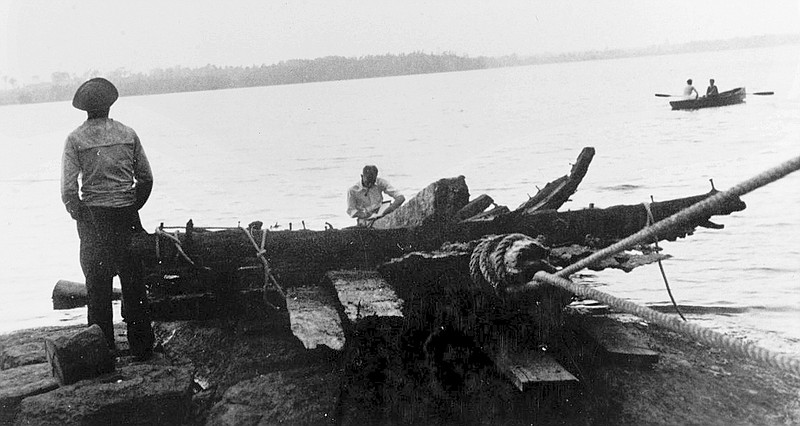MONTPELIER, Vt. (AP) - The remains of a Revolutionary War battleship that burned and sank as the Americans and British struggled for control of Lake Champlain will be in the hands of the U.S. Navy in time for the Fourth of July.
What's left of the schooner Royal Savage, raised from the lake in 1934, has been in possession of the city of Harrisburg, Pennsylvania, and will be turned over to the Navy during a ceremony Wednesday in Harrisburg.
"It's timbers. It's not a ship," said Michael Crawford, senior historian with the U.S. Navy History and Heritage Command. But "The significance of the timbers themselves is that they are the physical remains of an important sea battle."
Gen. Benedict Arnold, then still loyal to the American cause, led the rebels as they sparred with the British over control of the lake. The Battle of Valcour Island, on Oct. 11, 1776, caused the British to turn back for Canada and abandon efforts at a southward invasion until the following spring, giving the Americans more time to build their defenses.
It also marked the end of the Royal Savage. The ship, taken from the British in a previous battle, was accidentally run aground by the Americans at Valcour Island, captured back by the British and burned, according to one account. The ship "made a fine fire that lasted all night," wrote one Hessian officer fighting for the British.
Lake Champlain was a key strategic waterway in 1775 and 1776, used both for American incursions into British-held Canada and as an invasion route south for the British, said Art Cohn, director of the Lake Champlain Maritime Museum.
The British had hoped their troops coming from the north would meet at Albany with their forces coming from the south, up the Hudson River, and cut off New England from the rest of the colonies.
But American resistance in the region delayed the advance of British forces southward long enough to allow two rebel achievements: the capture of cannons at Fort Ticonderoga in New York, which were later used to force the British evacuation from Boston; and a victory for the Americans in the Battle of Saratoga, New York.
In 1996, Harrisburg bought a collection that included the Royal Savage's remains and planned to display them in a museum. Instead, the ship's timbers and other artifacts have remained in storage since then, said Joyce Davis, the city's communications director.
Cohn said the Navy is expected to make a traveling exhibit out of the remains, with stops likely around Lake Champlain, in Harrisburg and in Washington, D.C.
With Wednesday's handoff, Crawford said, "The Navy and the U.S. government is exercising its proper role in being the guardian of our heritage."

